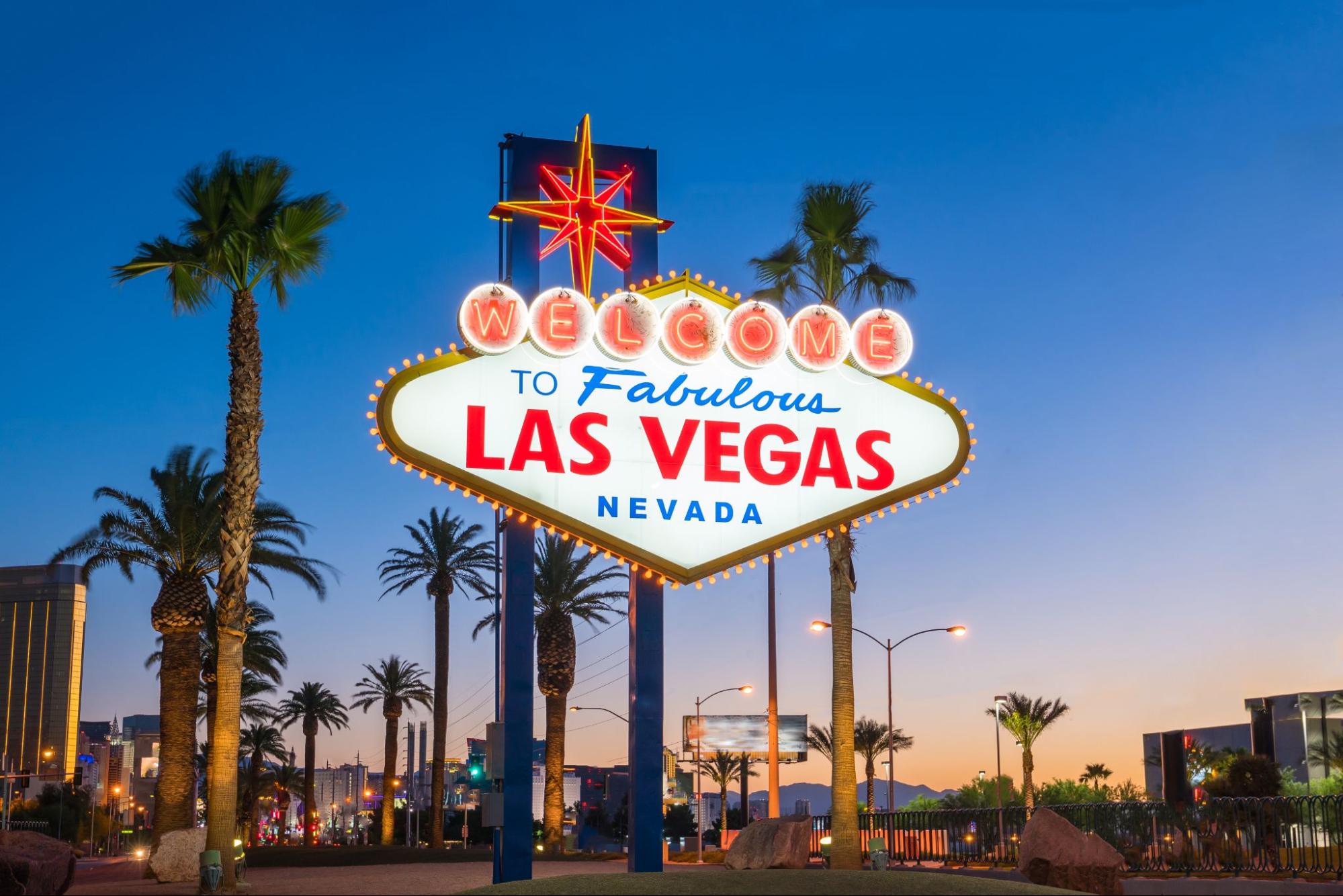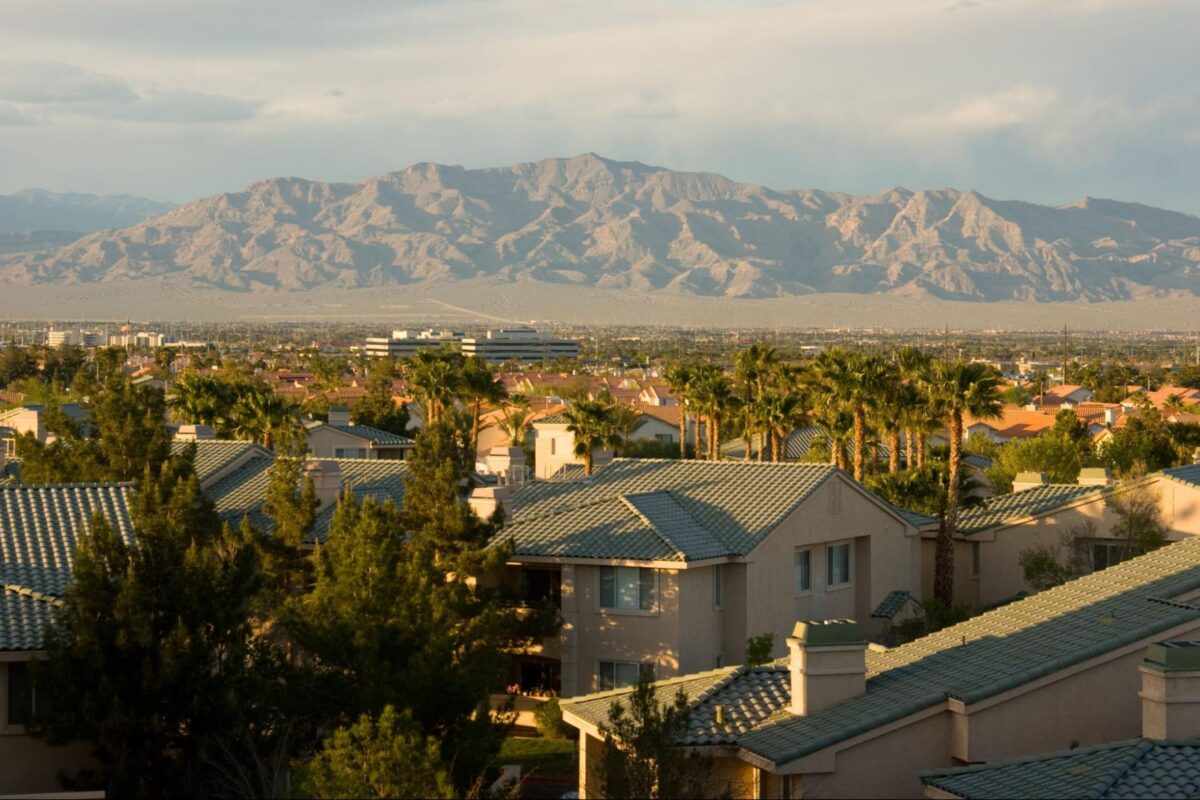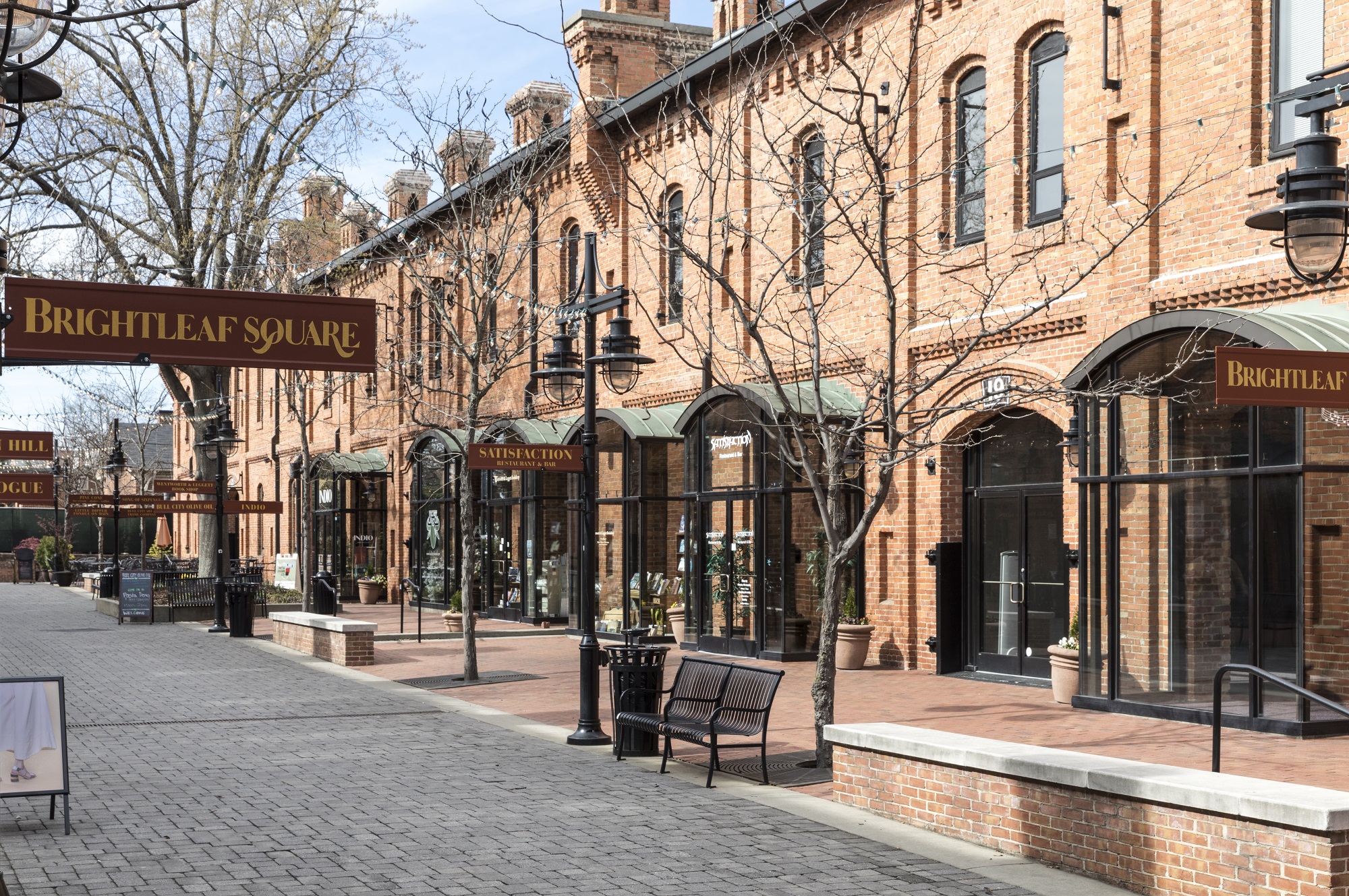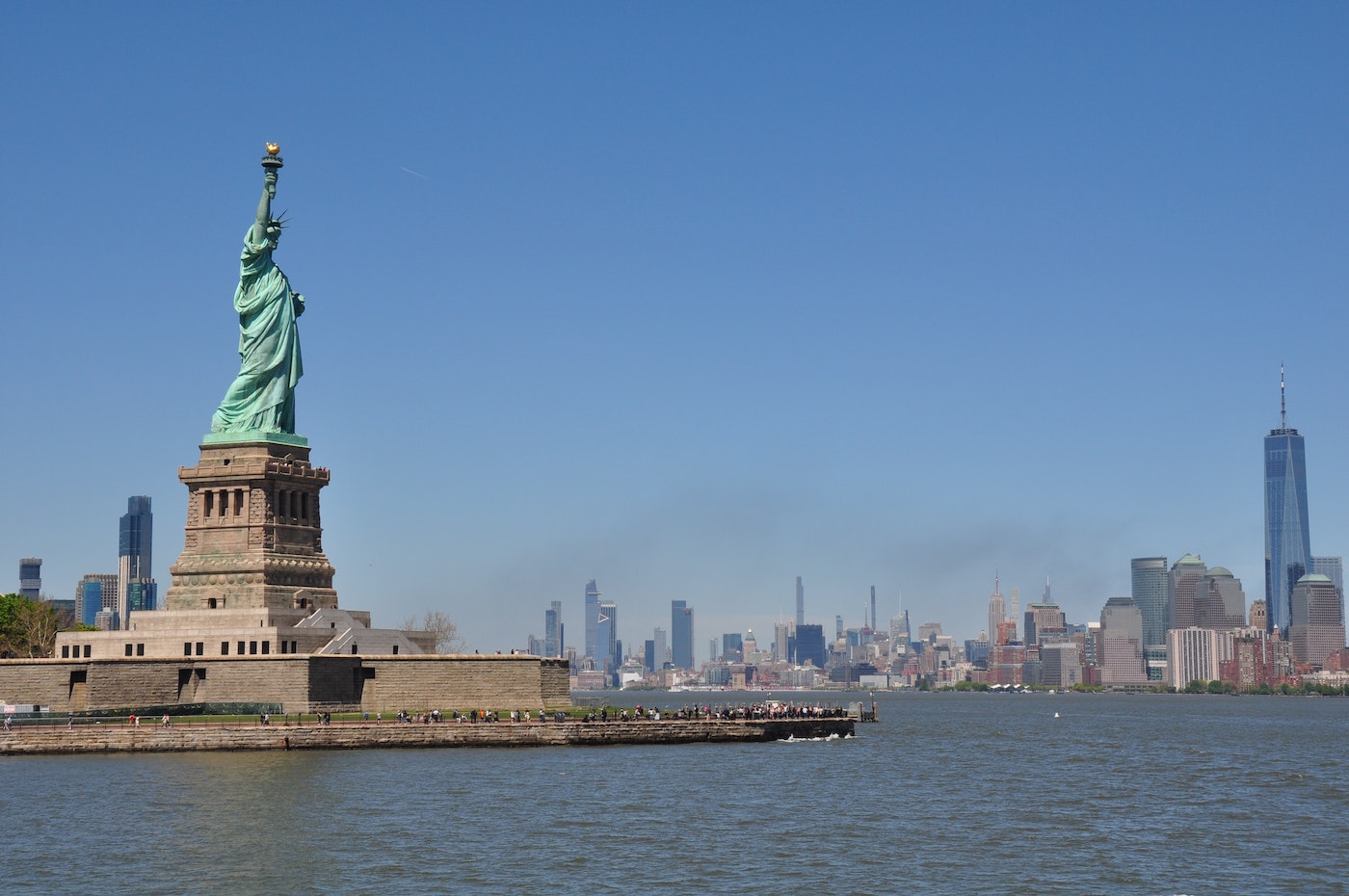
What Is the Cost of Living in Las Vegas?

Are you thinking about moving to Las Vegas? It is one of the most rapidly developing urban areas in the country, and an enviable place to live. In recent years, it’s seen an inflow of residents moving in from another state, luring in a new Las Vegas resident with the intoxicating excitement of its thrilling attractions and thriving nightlife.
Sin City’s extravagant facade can give the impression that you need to be making a killing at the casinos or be able to jet in from Dubai for a whim to afford to live here. But that’s not true.
So, how budget-friendly is the city, really—not just out for a weekend of unfettered spending, but year-round? This guide will address the cost of living in Las Vegas, including:
- Housing
- Utilities
- Transportation
- Food
- Entertainment
Without further ado, let’s dig into how you can take full advantage of the riches of Las Vegas while hedging your bets as deftly as your local poker champ.
The cost of living in Las Vegas, NV
The average household income in Las Vegas is a solid $79,656 per year, while the median household income is $56,354.
But for all the glitz, glam, and gobsmacking excesses of Las Vegas, Nevada, you’ll be pleasantly surprised to find out the city can be an affordable place to call home—if you play your cards right. So, what is the average living cost in Las Vegas?
Cost of housing in Las Vegas
Las Vegas (or simply, Vegas) is the thrumming heart of the Las Vegas Valley metropolitan area of Clark County, NV, which technically includes three major cities: Las Vegas, North Las Vegas, and Henderson.
Renters will find excellent housing options in some of the best neighborhoods in Vegas proper that are consistently less expensive than national rates. Apartments can typically be rented out at the following rates:
- Studio apartment: $800 per month on average
- One-bedroom apartment: $948 per month on average
- Two-bedroom apartment: $1,147 per month on average
However, three- and four-bedroom apartments are on par with (and sometimes pricier than) the rest of the country’s, averaging $1,629 and $1,963 per month, respectively. On the whole, the median rent in the area is $1,178 per month, while the median price for buying a home is $376,148.
Although housing in Vegas is 3% higher than the rest of the country, rent prices can’t be beaten when compared to some other cities in the American southwest, such as Phoenix or Los Angeles.
Cost of utilities in Las Vegas
It needn’t be mentioned that Las Vegas is hot. It is, after all, located in the Mojave Desert, home to the formidable Death Valley, the hottest, driest landscape in the whole of the United States.
Vegas itself is not a death trap—far from it—but it bears mentioning that your monthly bill that keeps the AC cranked can be intimidating. On average, residents who rent in the area will shell out $151.23 per month on their energy bill alone.
In 2020, KTNV Las Vegas reported that homeowners in the area are ranked as 12th in the nation as the demographic that spends the least on utilities. Residents pay approximately $372 per month on utility bills. A few more standard utility prices include:
- Natural gas: $72.10 per month
- Water: $70.39 per month
- Internet: $60 per month
- Trash and recycling: $14 per month
Excluding the impressive expense of keeping your AC flowing, which you’ll probably need to do for at least six months of the year minimum, the total cost of utilities can actually be very affordable for renters: a solid 10% lower than the national average.
Thinking about moving to Sin City? Check out the pros and cons of living in Las Vegas!
Cost of transportation in Las Vegas
The best way to get around Vegas is by car. Traffic is mostly a breeze if you stay off the Strip—the main boulevard in town that’s teeming with tourists 24/7/365. Any odd jams you may run into are well worth it to reach the rich natural preserves surrounding the city.
Gas in the area is affordable, averaging $2.96 per gallon, around 10% to 15% below the nation’s standard price.
As in many densely trafficked cities, insuring your car will be a bit pricier than other regions of the country. Auto insurance costs approximately 8% to 10% higher than the national average, ranging between $5,230 and $7,490 annually.
Getting around Las Vegas without a car isn’t impossible, but it’s not the method of navigation favored by city residents. The city’s public transportation system is headquartered with the Regional Transportation Commission of Southern Nevada, or RTC for short.
RTC provides 39 routes linking the city and surrounding areas. As a bonus, Las Vegas residents have the privilege of getting more bang for their buck than visitors on transit rates. As a new city dweller, you’ll be able to take advantage of the following reduced fares and passes:
- One-way ride: $2
- Two-hour pass: $3
- Unlimited day pass: $5
- Unlimited week pass: $20
- Unlimited two-week pass: $34
- Unlimited month pass: $65
RTC also offers reduced fare pricing for commuters between 6 and 17 years old, students K–12, and people over 60 years old—perfect for when your family or friends (and any little ones) are in town for a visit!
Cost of food in Las Vegas
Las Vegas is a town full of Michelin-starred restaurants, world-famous gastro-celebrities, and, when appetite strikes, innumerable options for delicious budget eats at all hours of the night.
It’s definitely possible to eat cheaply here, but to do so, you’ll want to cook for yourself. Groceries still tend to score a hair higher than the nation’s norm—around 4% above—with grocery staples costing the following on average:
- A gallon of whole milk: $3.16
- 12 dozen eggs: $1.84
- Loaf of bread: $2.52
- 1 lb. of chicken fillets: $3.39
As for eating out, dining for two at your typical no-frills restaurant will run you around $15 for an entree and appetizer. A full meal at a swankier, Vegas-style establishment will normally cost around four times as much, and you’ll have to chip in some extra for drinks and dessert.
Cost of entertainment in Las Vegas
If there’s anywhere visitors are known to spend money, it’s in Las Vegas. But as a full-time resident, how much of your budget you elect to use on entertainment is entirely up to you—and going to spectacular performances on a regular basis may not be your thing.
If you do want to dip an oar into Vegas’ extraordinary lineup of performances, here are a few of the going rates:
- Two tickets to a performance by Cirque du Soleil cost about $160 ($79 each, excluding sales tax).
- Tickets to “An Evening with Whitney Houston” with Base Hologram costs $82.
- A stand-up comedy show at The Comedy Cellar costs $25 for standard seating.
- A ticket to “RuPaul’s Drag Race Live” at Flamingo Las Vegas costs $69 for standard admission.
- A single movie ticket at your local cinema costs $12.
Yes, going to see a live show in Vegas can be expensive. However, your entertainment budget is entirely contingent on what you deem to be entertainment. For year-round residents of this city, spectacle and glamor can be a good time every once and a while—but they aren’t necessarily the go-to options for kicking back and enjoying yourself every time the weekend rolls around.
Here are some alternative ideas for having fun in Vegas that are a bit more affordable, and a bit less decadent:
- Visit a national park: Las Vegas is surrounded by resplendent national parks, like the Sloan Canyon National Conservation Area, Red Rock Canyon National Park, and the Mojave National Preserve, where you can hike, eBike, camp, and enjoy other outdoor recreation. No entrance fees are required to enter these parks, but you will have to pay a low overhead to use the campgrounds.
- Head to the beach : Yes, there is actually a beach all the way out in the sandy tundra of Nevada. Las Vegas’ Boulder Beach gazes out over the waterfront and toward Arizona, and Las Vegas locals come here to boat, kayak, and swim in waters notoriously warmer than the West Coast’s Pacific.
- Take a drive: Cruising through the deserted beauty of the American Southwest is a form of entertainment all its own. If you can afford the extra gas, taking a drive through the crimson and lavender desert at sundown can be just as spectacular as the latest Cirque du Soleil performance.
In coupling with these affordable diversions, you’ll also stumble upon plenty of quirky establishments riddled throughout Las Vegas, like the Pinball Hall of Fame or, if you’re feeling adventurous, some DIY sand-dune sledding in the desert!
Roll high (for less) on your Vegas apartment with Landing
Padding your pockets and practicing your poker face in preparation for a move to Las Vegas, NV? Housing can be one of the priciest expenses for Vegas locals, and you’ll want to find a spot that’s in your budget so you can enjoy everything else the Southwestern city has to offer. For the best rates on flexible-lease rentals, check out Landing’s network of furnished apartments in Las Vegas to match your budget.









